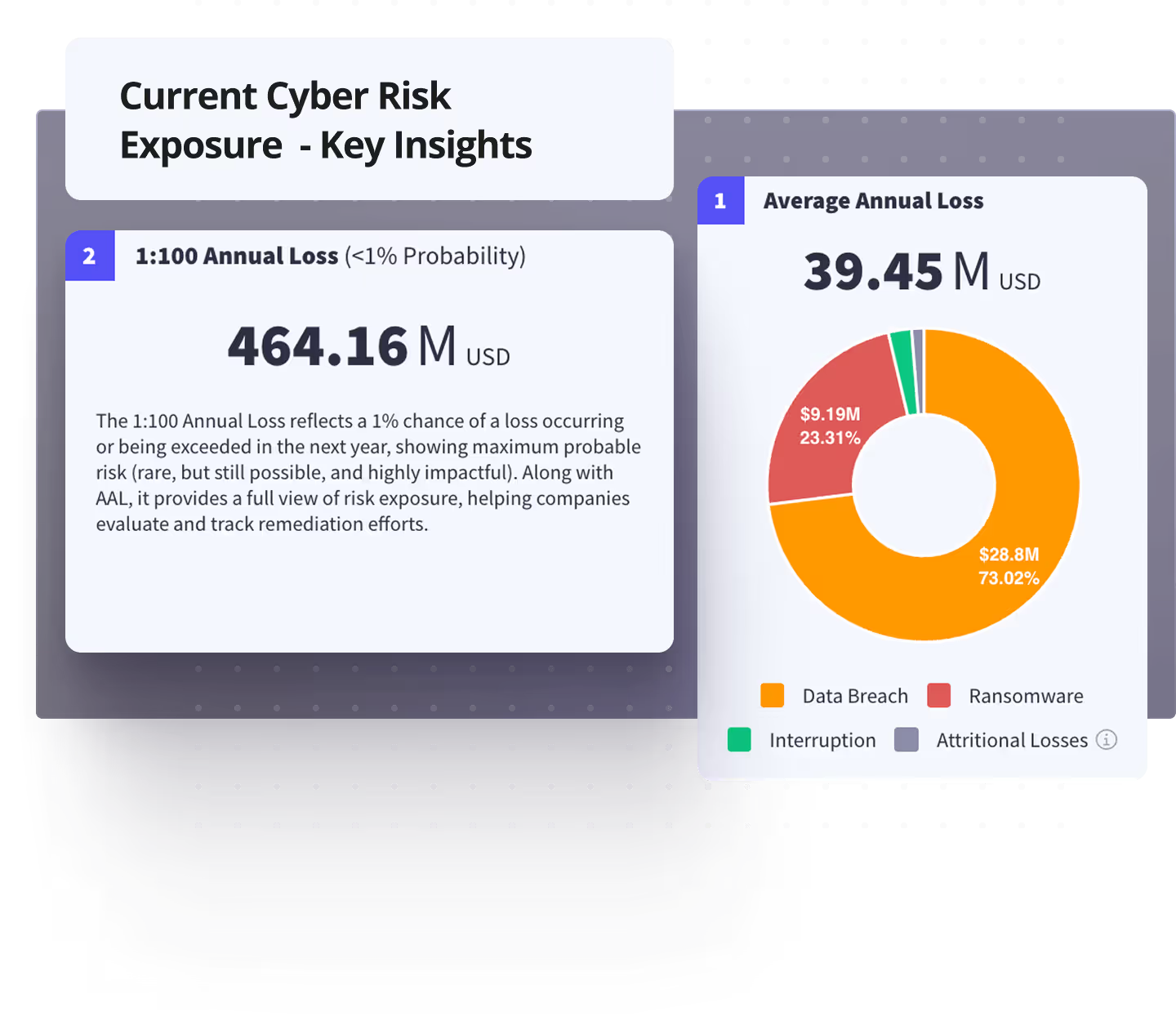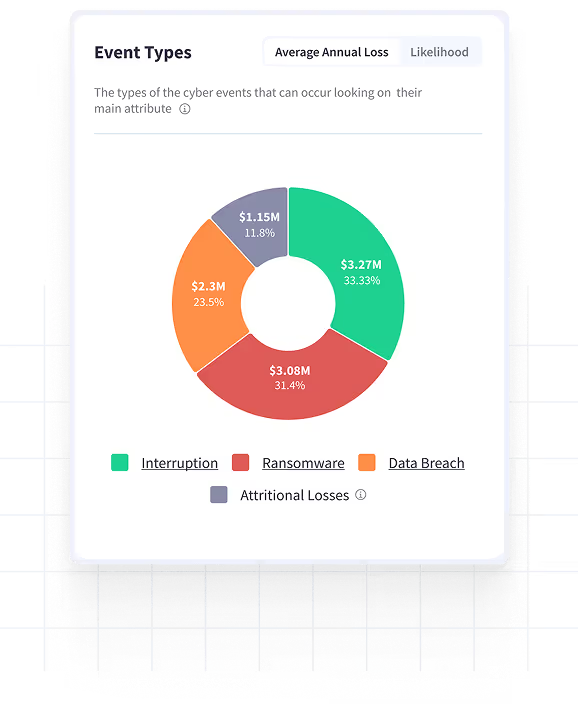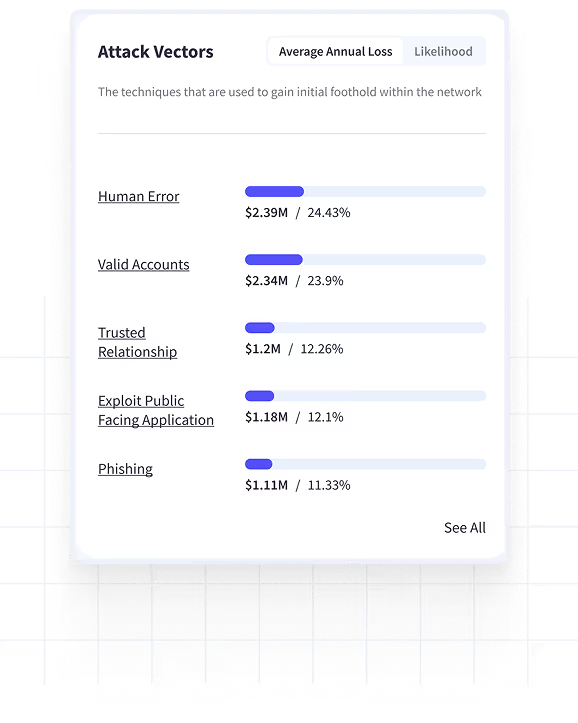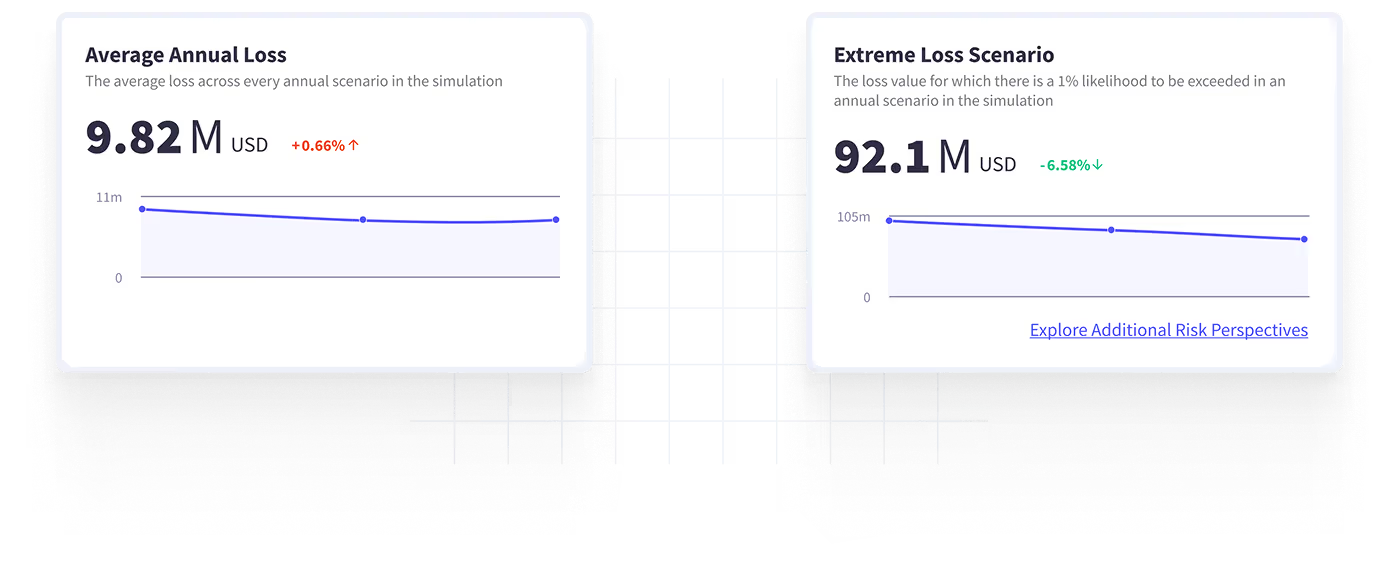Map and Measure Cyber Risk Exposure Across the Financial Institution
Kovrr equips financial organizations to translate cyber risk into financial terms, ensuring it can be addressed with the same rigor as other forms of enterprise risk. Our CRQ platform offers cybersecurity leaders the accurate, precise data necessary to make confident decisions and prioritize mitigation initiatives based on potential monetary implications. With CRQ, cyber risk management can finally align with the rest of the business strategy.


Cyber Risk Has Become a Material Financial Threat
In the financial services sector, every exposure has a number, and cyber risk is no exception. Data breaches can trigger massive losses and erode customer trust. What's more, regulators increasingly expect documentation and proof that cyber risk is being managed like any other potential material exposure. Firms that can't translate digital threats into financial terms will continue to struggle to meet board expectations, satisfy compliance rules, and build resilience.
Treating Cyber Risk Like Every Other Financial Exposure
Market risk, credit risk, and operational risk are all managed by leveraging quantified scenarios, defined exposure levels, and rigorous financial tracking. Cyber risk should be treated no differently. Kovrr's CRQ platform brings cyber exposure into familiar territory for financial services teams, quantifying losses from digital threats and providing reliable forecasts for mitigation and compliance initiatives. With Kovrr, cyber risk is spoken in the language of finance.




Accelerate DORA Compliance With Cyber Risk Quantification
Kovrr’s CRQ platform empowers EU financial entities to meet DORA’s stringent ICT risk management requirements without manual overhead. Define risk tolerance, quantify vendor exposure, and validate resilience strategies with confidence.



The Cyber Risk Quantification Advantage for Financial Services
With Kovrr's CRQ solution, financial services institutions can:
Allocate capital effectively: Quantify potential cyber losses to inform cybersecurity investment and avoid over- or under-spending on controls.
Connect risk metrics with capital planning: Tie cyber exposure to broader enterprise risk models and financial stress testing frameworks.
Strengthen DORA and regulatory reporting readiness: Harness defensible metrics that align with evolving disclosure expectations.
Quantify risk transfer decisions: Benchmark retained risk against insurance coverage to support renewal strategies and optimize spend.
Assess vendor risk in financial terms: Evaluate third-party exposure using objective loss modeling and understand where concentration risk exists.
Cyber Risk Management for Financial Services FAQs
Schedule a DemoWhat makes cyber risk uniquely challenging for financial institutions?

Financial institutions manage high-value digital assets across complex, expansive infrastructures, making them particularly attractive targets to malicious cyber actors. Moreover, disruptions due to cyber events don't just impact cloud systems; they also shatter market confidence, regulatory standing, and, potentially, liquidity. Without quantification, many financial firms are struggling to assess their financial levels and embed cyber risk management into their broader ERM strategy, exacerbating their vulnerability.
Can Kovrr’s CRQ platform support risk reporting for boards and regulators?

Absolutely. Kovrr delivers financially framed cyber-exposure data that can help organizations adhere to reporting mandates such as DORA and the SEC cybersecurity regulations. Outputs include top potential loss scenarios, Average Annual Loss (AAL) forecasts, and mitigation ROI of cybersecurity upgrades, enabling CISOs, CFOs, and CROs to brief both boards and regulators using tangible metrics, not security jargon.
How does Kovrr assist in setting cyber risk tolerance thresholds for the firm?

Our CRQ platform quantifies cyber risk exposure across any business unit, such as asset classes, subsidiaries, and regional offices. By modeling probable and high-end loss scenarios and plotting them on a loss distribution curve, Kovrr enables leadership to establish a data-driven risk appetite and threshold levels grounded in financial reality. These data points support more disciplined governance and adequate capital allocation.
What types of loss scenarios can Kovrr’s CRQ model for financial services?

Kovrr models financial materiality events like ransomware attacks on payment systems and data exfiltration from client accounts, along with the lower-impact, lower-likelihood scenarios. Each scenario, which can be thoroughly documented in the CRQ-powered cyber risk register, includes exposure estimates, frequency probabilities, and a breakdown of the costs, offering the information necessary for resilience planning and cyber insurance optimization.


.jpg)
